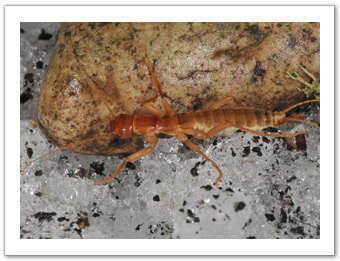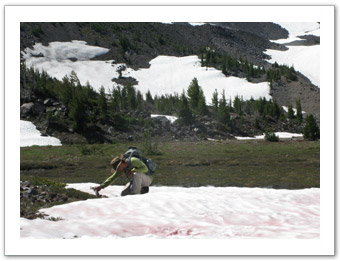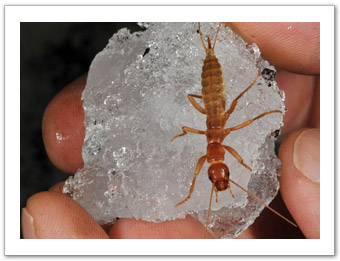Conservation biology of ice crawlers (grylloblattids) in the Pacific Northwest.
Grylloblattids (also known as ice crawlers or rock crawlers) are a poorly known group of insects named for their resemblance to both crickets and cockroaches. They are restricted to cold and extreme habitats such as glaciated mountains or ice caves. Grylloblattids are found only in Japan, Siberia, the northwestern United States, and western Canada. There are 26 species known worldwide; the 10 North American species are restricted to icy mountains in Montana, California, Oregon, Washington, and western Canada. As glaciers and ice fields recede due to the effects of climate change many grylloblattid habitats are threatened. Therefore, Grylloblattodea stands as the least known and the most threatened insect order. Conservation efforts are further complicated by an almost complete lack of information on grylloblattid life history, biology, and behavior. To shed light on the cryptic habits of grylloblattids, we are currently investigating:
Diel activity patterns in glacier and cave grylloblattids
 ^A cold morning in Three Sisters Wilderness, Oregon
^A cold morning in Three Sisters Wilderness, Oregon
Grylloblattids are generally restricted to high elevation glaciers or low elevation caves with permanent ice. Glacial grylloblattids are strictly nocturnal possibly to avoid exposure to the sun's heat or predation from birds that visit the snowfields. Cave grylloblattids, however, live in permanent darkness, a stable temperature, and are not subject to bird predation (but may be subject to bat predation?). We are comparing diel activity patterns in glacial and cave grylloblattids to understand how habitat differences affect grylloblattid activity.
Foraging ecology and dietary preferences
 ^A grylloblattid forages for food on the surface of a glacier
^A grylloblattid forages for food on the surface of a glacier
High elevation glaciers appear devoid of life and food resources may be limited and patchy. When closely inspected, glaciers and snow fields are littered with a supply of refrigerated food particles, mostly dead insects, spiders, and plant material. Most of them originate in the lowlands and are delivered to high elevations by updraft air currents. Grylloblattids are primarily predators and scavengers and venture onto the surface of the ice at night to search for food. We are exploring the foraging ecology in grylloblattids to understand food searching behavior, prey handling and selection, and feeding preferences.
Behavioral interactions between ice crawlers and ice beetles
 ^Searching for grylloblattids on watermelon snow
^Searching for grylloblattids on watermelon snow
Ice crawlers (Grylloblatta spp.) and ice beetles (Nebria spp.) are both predatory insects well adapted to life in frigid climates. Both are nocturnal and emerge at night to feed on insects that became stranded on the snow. We are examining the behavioral interactions between ice crawlers and ice beetles to determine whether ice beetles have a negative impact on ice crawlers due to predation.
Conservation biology of grylloblattids
 ^Receding glaciers may contribute to grylloblattid population declines
^Receding glaciers may contribute to grylloblattid population declines
As glaciers and ice fields recede due to the effects of climate change many grylloblattid habitats are threatened and grylloblattids are in dire need of basic research and conservation. Some species are found only on certain mountains or in certain caves, most often volcanic lava tubes. Furthermore, human actions such as cave vandalism disrupt the sensitive cave environment and may accelerate grylloblattid extinction. We survey various grylloblattid populations in the Cascade Range in Oregon to learn more about population size, movement, and possible population declines.
Population age structure and sex ratios
 ^Adult female grylloblattid (ovipositor visible between the cerci)
^Adult female grylloblattid (ovipositor visible between the cerci)
Grylloblattid populations are comprised of adults and nymphs of various stages. Early instar nymphs are rarely seen foraging on the surface of glaciers suggesting they either feed below the surface, receive some form of parental care, or engage in cannibalism and/or coprophagy as do the closely related cockroaches. The most frequently observed individuals are older nymphs and adults. Among adults, females are much more common than males, possibly due to a longer lifespan. We are surveying grylloblattid populations to determine the population age structure and sex ratios, which appear to be highly skewed toward females.


